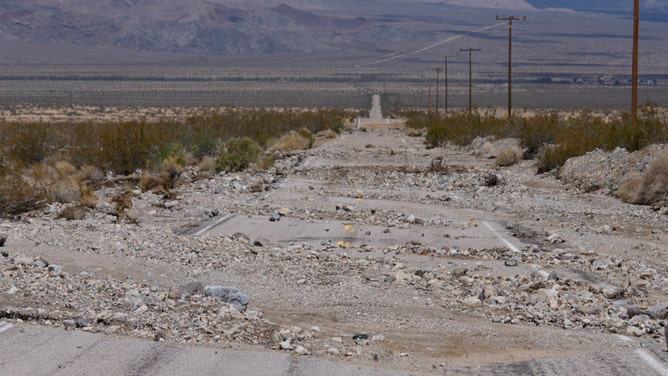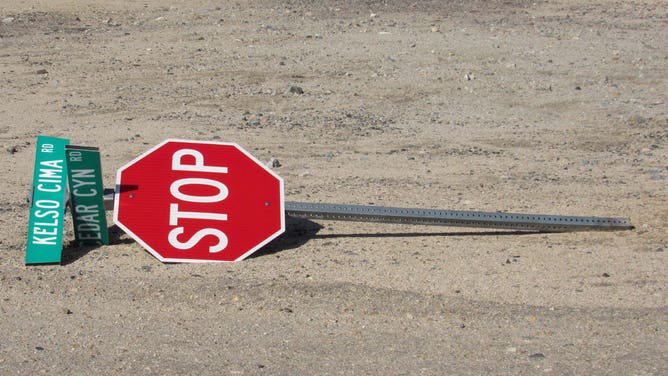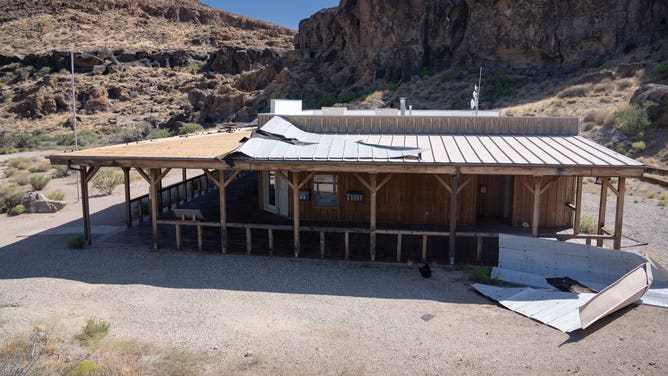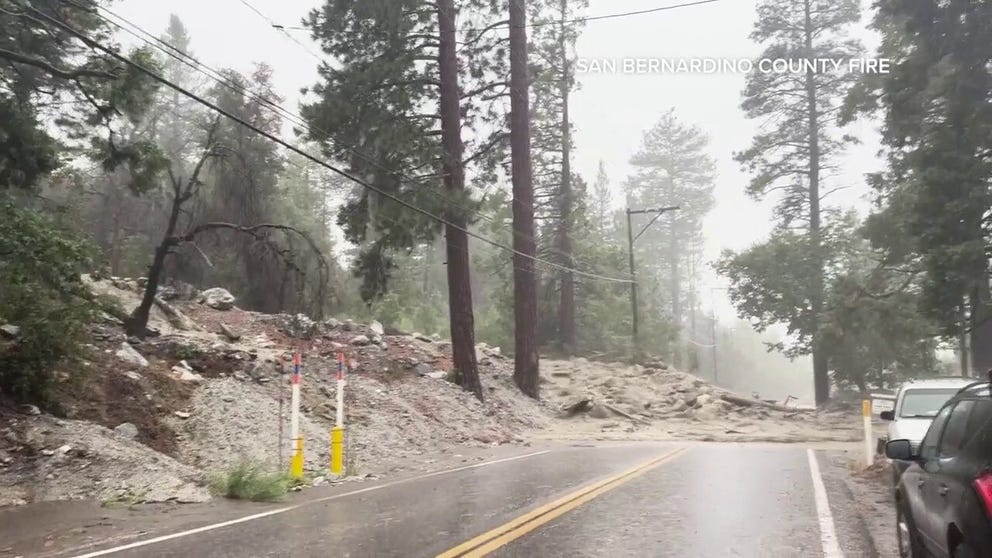Mojave National Preserve partially reopens after Hilary
MNP said that Hilary impacted the preserve and the surrounding region with historic heavy rainfall and strong winds on Aug. 20.
FILE: Hilary rain triggers California mudslide
San Bernardino County Firefighters watched helplessly as a landslide came down around their firehouse.
Mojave National Preserve partially reopened Friday morning after historic rainfall from Hilary caused significant storm damage throughout the park.
As a tropical storm, Hilary dropped record amounts of rainfall in the Southwest, with Los Angeles and a number of other California cities seeing their highest summer daily precipitation records.
MNP officials said that Hilary impacted the preserve and the surrounding region with historic heavy rainfall and strong winds on Aug. 20. On that day, the Mid Hills weather station in MNP recorded 2.4 inches of rain, as the park usually sees 3.5 inches of rainfall at lower elevations and 10 inches in the mountains per year.

Road covered in debris after Hilary.
(@MojaveNPS / X / FOX Weather)
"Mojave National Preserve road crews have been working long hours, including weekends since the hurricane incident to clear and repair roadways and facilities," said Acting Superintendent Debra Hughson. "It is estimated it may take a few more weeks before all facilities can be safely open."
HISTORIC HILARY SETS RAINFALL RECORDS IN 4 STATES
As of Friday, the areas that are open include South Kelbaker Road, Kelso Cima Road, Morning Star Road and a portion of Ivanpah Road between Morning Star Mine and Nipton Roads.

Storm damage from Hilary.
(@MojaveNPS / X / FOX Weather)
The areas that remain closed include Ivanpah Road, Lanfair Road, Essex Road, Black Canyon Road, Cedar Canyon Road and North Kelbaker between Kelso and Baker. MNP added that all unimproved and backcountry roads, such as Mojave Road, are closed.
Certain campgrounds and facilities will also remain closed. These include the Black Canyon group site, Hole-in-the-Wall and Mid Hills campgrounds, along with the Hole-in-the-Wall Visitor Center. MNP said the visitor center will remain closed until repairs can be made to the damaged roof, and the campgrounds will only reopen when the washed-out roads leading to them can be repaired.

Storm damage from Hilary.
(@MojaveNPS / X / FOX Weather)
Hilary made landfall as a Category 4 hurricane in the southern Baja California Peninsula of Mexico and then decreased in intensity to become a tropical storm by the time it reached California and the desert Southwest.
